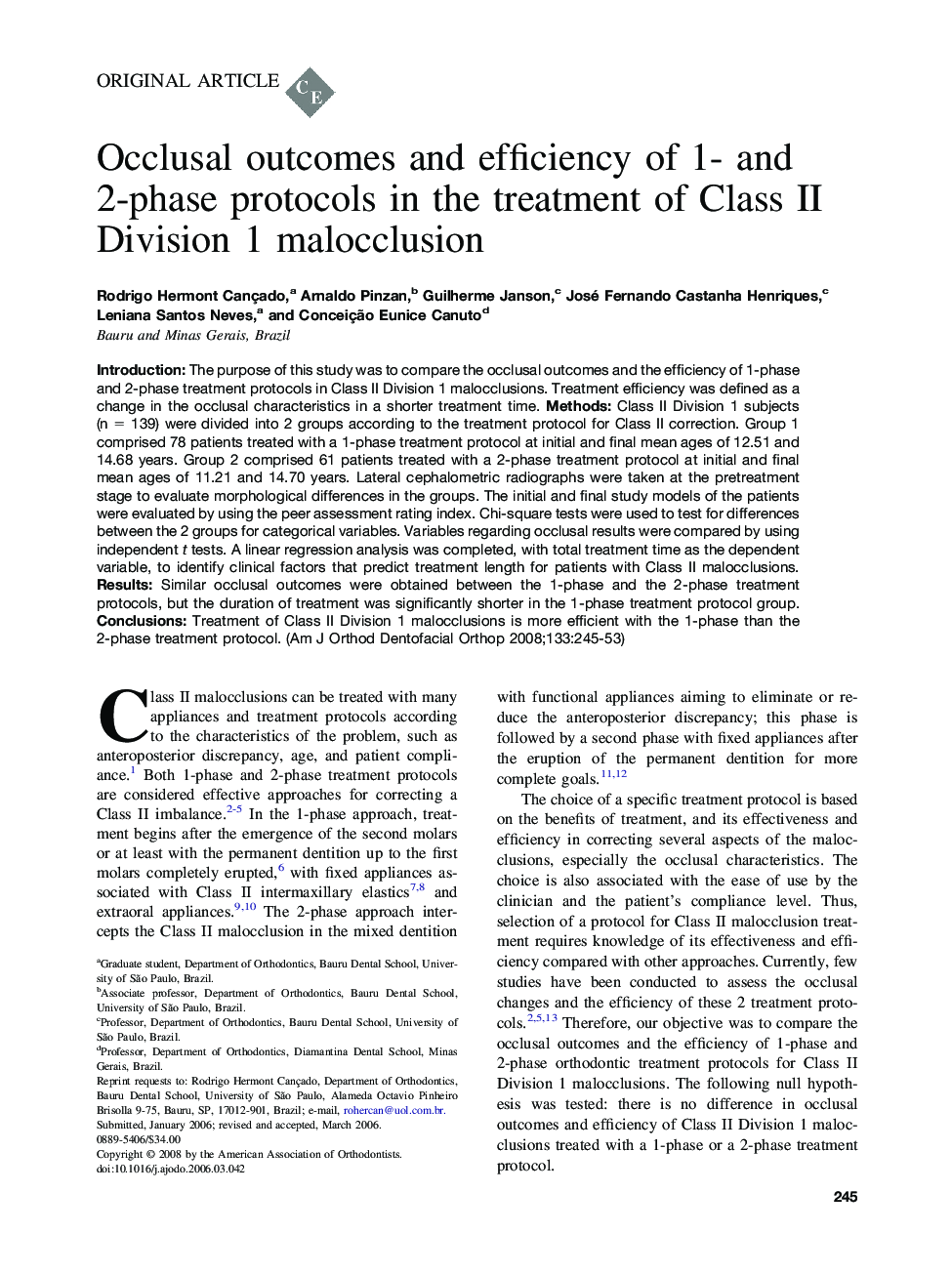| Article ID | Journal | Published Year | Pages | File Type |
|---|---|---|---|---|
| 3120363 | American Journal of Orthodontics and Dentofacial Orthopedics | 2008 | 9 Pages |
Introduction: The purpose of this study was to compare the occlusal outcomes and the efficiency of 1-phase and 2-phase treatment protocols in Class II Division 1 malocclusions. Treatment efficiency was defined as a change in the occlusal characteristics in a shorter treatment time. Methods: Class II Division 1 subjects (n = 139) were divided into 2 groups according to the treatment protocol for Class II correction. Group 1 comprised 78 patients treated with a 1-phase treatment protocol at initial and final mean ages of 12.51 and 14.68 years. Group 2 comprised 61 patients treated with a 2-phase treatment protocol at initial and final mean ages of 11.21 and 14.70 years. Lateral cephalometric radiographs were taken at the pretreatment stage to evaluate morphological differences in the groups. The initial and final study models of the patients were evaluated by using the peer assessment rating index. Chi-square tests were used to test for differences between the 2 groups for categorical variables. Variables regarding occlusal results were compared by using independent t tests. A linear regression analysis was completed, with total treatment time as the dependent variable, to identify clinical factors that predict treatment length for patients with Class II malocclusions. Results: Similar occlusal outcomes were obtained between the 1-phase and the 2-phase treatment protocols, but the duration of treatment was significantly shorter in the 1-phase treatment protocol group. Conclusions: Treatment of Class II Division 1 malocclusions is more efficient with the 1-phase than the 2-phase treatment protocol.
